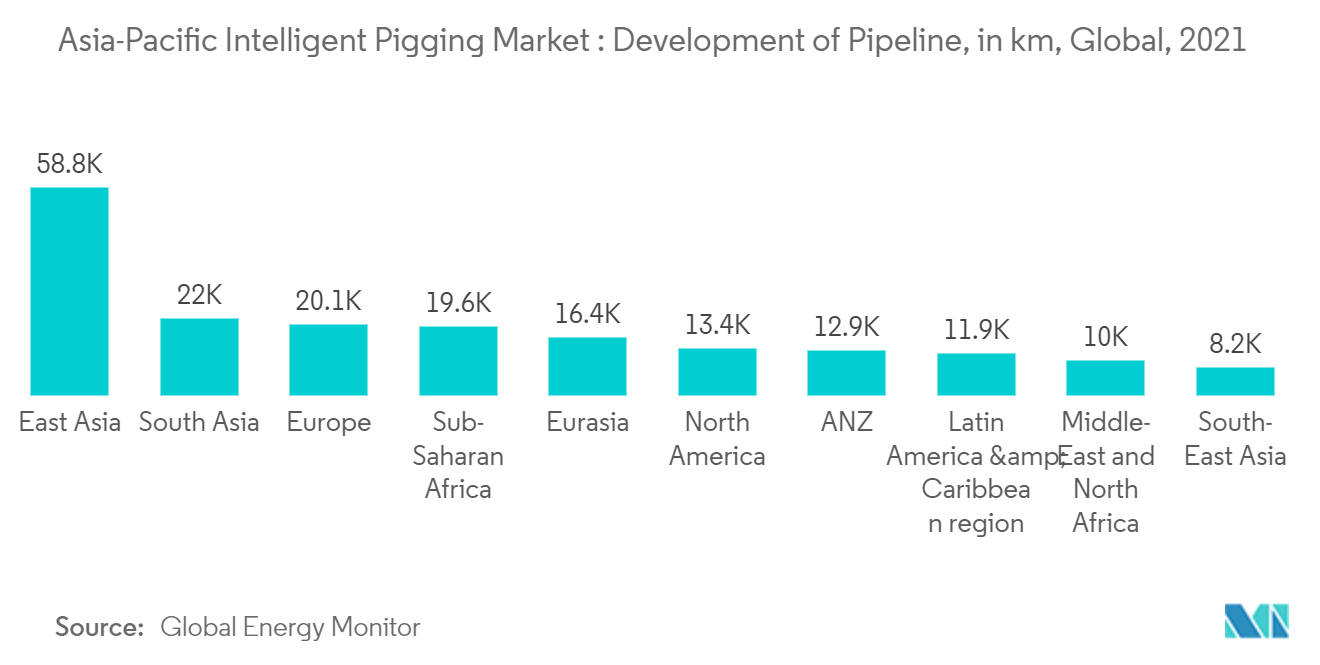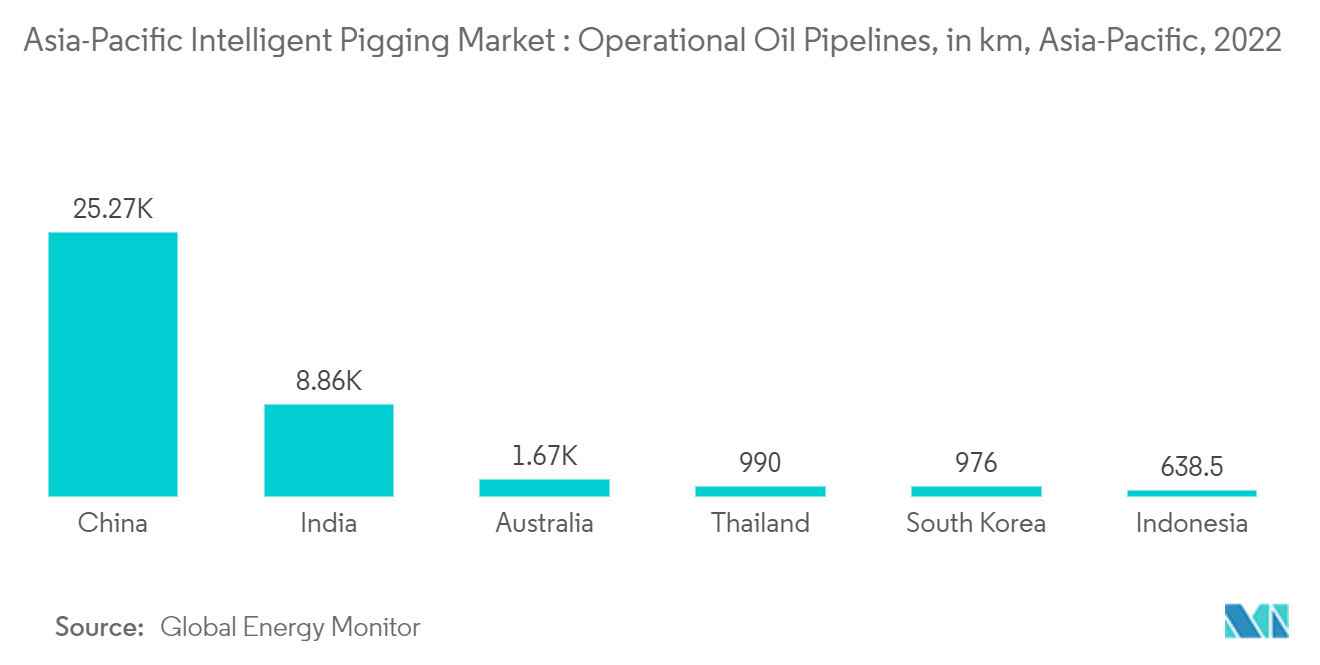Market Trends of Asia-Pacific Intelligent Pigging Industry
This section covers the major market trends shaping the APAC Intelligent Pigging Market according to our research experts:
Ultrasonic Pigs Expected to Witness Significant Growth
- An ultrasonic pig uses ultrasounds to detect the thickness changes in the pipe wall. Ultrasonic pigs are equipped with a transducer, which perpendicularly transmits signals to the pipe wall surface and receives signals from both the pipeline's internal and external surfaces. Furthermore, the echo received from the signals can be used to determine the pipeline wall's thickness. Ultrasonic pigs provide an absolute measurement of defect depth in the pipe and can measure metal losses in much thicker pipes than is possible with magnetic flux leakage technology.
- Ultrasonic pigs can be used in a wide range of pipeline sizes, ranging from 4 inches up to 56 inches. The technology is generally used for liquid pipelines but can also be used for gas pipelines with the help of a couplant. The pipelines developed in the East-Asian region are 58,800km in length. As of 2021, the length is expected to extend even more due to the demand in upcoming projects.
- For example, in 2022, the construction of the 580 kilometers pipeline in Western Australia started. The USD 460 million worth of pipelines may transport natural gas from the Perth basin to resources projects in the state's Goldfield. The Northern Goldfield Interconnect is expected to be a part of the 2,690-km gas pipeline network in Western Australia and significantly increase the volume of gas transported inland.
- The ultrasonic segment is also expected to grow in the near future due to the technological developments made in the sector. As an example, in January 2022, Dacon Inspection Technologies, the Thailand-based company, made new advancements in the ultrasonic in-line inspection fleet used for pipelines, which increases the inspection data accuracy as well as the inspection of non-ferrous materials such as metals and plastics like High-Density Poly Ethylene (HDPE) pipelines.
- Such developments are expected to drive the technology market in the region in a fast-paced manner.

China Expected to Dominate the Market
- China is the largest crude oil and natural gas producer in the Asia-Pacific region and accounted for around 50% and 26% of the total crude oil and natural gas production in the region in 2021. In 2021, 198.98 million tons of crude oil were produced, an increase of 2.4% over the previous year, a rise of 4.0% over 2020, and an average increase of 2.0% over the two years.
- The country envisaged consistent growth in the pipeline network established due to the increasing energy consumption. The total length of the operational oil pipelines in the country was recorded as 25,271.3 km as of June 2022, the highest among all the Asian countries. The network is bound to grow more due to the upcoming pipeline projects in the country.
- For instance, the construction of the No.4 pipeline of China's West-to-East transmission project started in September 2022. The pipeline was designed to lift the annual carrying capacity of the system to more than 100 billion cubic meters (bcm) after linking with the completed No.3 and No.2 pipelines. The No.4 gas pipeline is expected to be 3,340km long, from Wuqiacounty in Northwest China's Xinjiang Uygur Autonomous Region to Zhongwei in Northwest China's Ningxia Hui Autonomous Region.
- In addition, in February 2022, Russia agreed to a 30-year contract to supply gas to China via a new pipeline. It may settle the recent gas sales in Euros, bolstering an energy alliance with Beijing amid Moscow's strained ties with the West over Ukraine and other issues. Gazprom, which has a monopoly on Russian gas exports by pipeline, agreed to supply Chinese state energy major CNPC with 10 billion cubic meters of gas annually.
- Such developments are expected to visibly steer the market in China more than any other country in the region.


